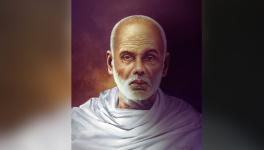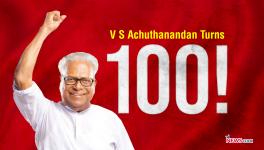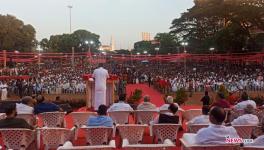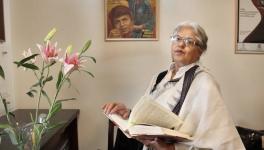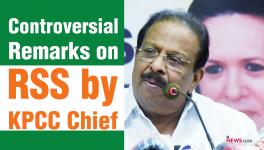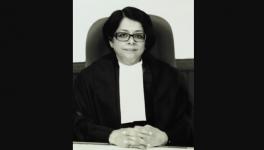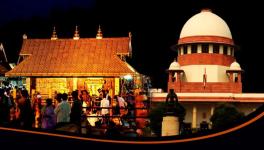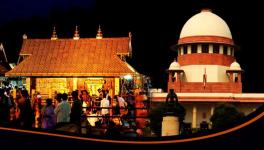SC Upholds Women’s Right to Enter Sabarimala Temple
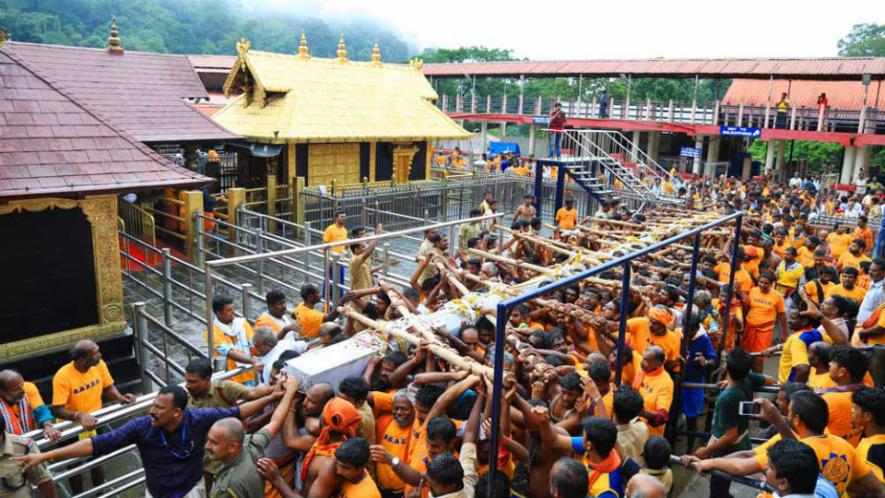
A majority on a Bench comprising Chief Justice Dipak Misra, Justice RF Nariman, Justice AM Khanwilkar, Justice DY Chandrachud and Justice Indu Malhotra struck down the restriction on women’s entry in the Sabarimala temple entry case today. The main Judgement was authored by the Chief Justice, which he delivered for himself, and Justice Khanwilkar. Justice Nariman and Justice Chandrachud delivered separate concurring Judgements. Justice Malhotra delivered the sole dissenting Judgement on the ground that rationality should not be seen in the matters of religious sentiment.
The petitioners have contended that Rule 3(b) of the Kerala Hindu Places of Public Worship (Authorisation of Entry) Rules, 1965 framed under Section 4 of the Kerala Hindu Places of Public Worship (Authorisation of Entry) Act, 1965 violates Articles 14 (Right to Equality), 15 (Prohibition of Discrimination), 25 (Freedom of Religion) under fundamental rights and 51A(e) (to promote harmony and renounce practices derogatory to women) under the fundamental duties. The respondents, however, alluded to the celibacy of the deity, Ayyappa, and hence argued that the restriction is not a ban on all women, but only women between the ages of 10 and 50. What essentially transpires in these sets of claims and counterclaims is a debate on whether constitutional morality or the doctrine of essential practices will prevail.
Interestingly, in yesterday’s decision concerning an appeal to refer Ismail Faruqui to a larger bench, a similar issue appeared. The decision in Ismail Faruqui had placed the rights of the State at a higher pedestal than the doctrine of essential practices in the context of acquiring the disputed property of Ramjanma Bhumi – Babri Masjid. Though the Supreme Court had dismissed the appeal, they allowed the appellants to raise the issue in their appeals against the Allahabad High Court’s decision.
Regarding the Sabarimala temple controversy, the Kerala High Court had upheld the entry ban in its decision in S. Mahendran v. The Secretary, Travancore in 1991. This decision went unchallenged till 2006 when the Indian Young Lawyers Association filed a Public Interest Litigation (PIL) in the Supreme Court.
On the issue of whether the followers of Lord Ayyappa constitute a religious denomination, the main Judgement stated:
“There is no identified group called Ayyappans. Every Hindu devotee can go to the temple. We have also been apprised that there are other temples for Lord Ayyappa and there is no such prohibition. Therefore, there is no identified sect. Accordingly, we hold, without any hesitation, that Sabarimala temple is a public religious endowment and there are no exclusive identified followers of the cult. […] Therefore, the devotees of Lord Ayyappa are just Hindus and do not constitute a separate religious denomination. For a religious denomination, there must be new methodology provided for a religion. Mere observance of certain practices, even though from a long time, does not make it a distinct religion on that account.”
Justice Malhotra’s dissenting Judgement went completely against this opinion. She stated:
“The issue whether the Sabarimala Temple constitutes a ‘religious denomination’, or a sect thereof, is a mixed question of fact and law. […] The proper forum to ascertain whether a certain sect constitutes a religious denomination or not, would be more appropriately determined by a civil court, where both parties are given the opportunity of leading evidence to establish their case. […] The Constitution ensures a place for diverse religions, creeds, denominations and sects thereof to co-exist in a secular society. It is necessary that the term ‘religious denomination’ should receive an interpretation which is in furtherance of the Constitutional object of a pluralistic society.”
The main Judgement accepted the submission of the Amicus Curiae that Article 25 does not only concern interfaith parity but intra-faith parity as well. In this regard, the Chief Justice did not agree with the respondents’ submissions that allowing women entry into the Sabarimala temple would affect public morality. The Chief Justice stated:
“… the notions of public order, morality and health cannot be used as colourable device to restrict the freedom to freely practise religion and discriminate against women of the age group of 10 to 50 years by denying them their legal right to enter and offer their prayers at the Sabarimala temple for the simple reason that public morality must yield to constitutional morality.”
Justice Malhotra dealt with this issue in three separate ways: the first was through the lens of Articles 14 and 15, then analysing the role of Courts in determining matters concerning religion, and finally tackling Constitutional morality in a secular polity.
In the context of Article 14, Justice Malhotra stated: “It is not for the courts to determine which of these practises of a faith are to be struck down, except if they are pernicious, oppressive, or a social evil, like Sati. […] The issue of what constitutes an essential religious practise is for the religious community to decide.”
Regarding the application of Article 15, Justice Malhotra relied on the Constituent Assembly Debates where the Assembly finally decided not to include words like ‘temple’ and ‘places of worship’ as public places. In this regard she stated:
“The conscious deletion of “temples” and “places of worship” from the Draft Article 9(1) has to be given due consideration. The contention of the learned Amicus Curiae that the Sabarimala Temple would be included within the ambit of ‘places of public resort’ under Article 15(2) cannot be accepted.”
On the roles of Courts in matters concerning religion, Justice Malhotra stated:
“Judicial review of religious practises ought not to be undertaken, as the Court cannot impose its morality or rationality with respect to the form of worship of a deity. Doing so would negate the freedom to practise one’s religion according to one’s faith and beliefs. It would amount to rationalising religion, faith and beliefs, which is outside the ken of Courts.”
She reiterated this view when dealing with constitutional morality in matters of religion in a secular polity wherein she stated:
“It is the Constitutional duty of the Court to harmonise the rights of all persons, religious denominations or sects thereof, to practise their religion according to their beliefs and practises.” Which when read with the other parts of the dissenting Judgement would imply that all religious denominations have some form of a right to self-determination.
The main Judgement had held that exclusionary practices do not constitute an essential practice as per the Hindu religion. The Chief Justice stated:
“In the absence of any scriptural or textual evidence, we cannot accord to the exclusionary practice followed at the Sabarimala temple the status of an essential practice of Hindu religion. […] By allowing women to enter into the Sabarimala temple for offering prayers, it cannot be imagined that the nature of Hindu religion would be fundamentally altered or changed in any manner. […]
The Devaswom Board also took a stand before the High Court that restriction of entry for women was only during Mandalam, Makaeavilakku and Vishnu days. The same has also been pointed out by learned Senior Counsel, Ms. Indira Jaising, that the impugned exclusionary practice in question is a 'custom with some aberrations' as prior to the passing of the Notification in 1950, women of all age groups used to visit the Sabarimala temple for the first rice feeding ceremony of their children.
Therefore, there seems to be no continuity in the exclusionary practice followed at the Sabarimala temple and in view of this, it cannot be treated as an essential practice.”
Justice Malhotra had a completely different interpretation of the doctrine as well as a different appreciation of the facts presented. She stated:
“In the present case, the character of the temple at Sabarimala is unique on the basis of centuries old religious practises followed to preserve the manifestation of the deity, and the worship associated with it. Any interference with the mode and manner of worship of this religious denomination, or sect, would impact the character of the Temple, and affect the beliefs and practises of the worshippers of this Temple.”
What the divergent views on all of the issues presented in the Sabarimala case show is that the concurring Judges continued in a similar vein as Navtej Singh Johar, wherein the concept of transformative constitutionalism was applied. Whereas, the dissenting Judgement appears not to apply this concept, despite Justice Malhotra concurring with the decision in the 377 case.
Get the latest reports & analysis with people's perspective on Protests, movements & deep analytical videos, discussions of the current affairs in your Telegram app. Subscribe to NewsClick's Telegram channel & get Real-Time updates on stories, as they get published on our website.









